Frank's travels around Britain 2007.
Hever Castle &
Brighton Pavilion.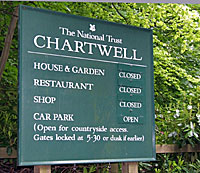
Hever Castle came up because for the visit time, I got bad weather on one of my trips!
The original plan was to go back to Box Hill to photograph butterflies & wild Orchids (apparently it is a world famous site). However, like Frank, butterflies don't like drizzly rain & the views are terrible. So what to do? With great reluctance, I decided to spend hard earned money going into places (to get out of the rain) and my first choice, Chartwell, of Churchill fame, was closed!
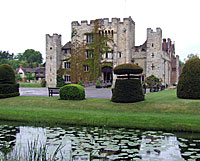 Hever
village is only a few miles from Chartwell & Hever Castle
(both are in Kent) was the seat of the Boleyn family. Originally a farmhouse, it
was built in the 13th century and converted into a manor in 1462 by Geoffrey
Boleyn, who served as Lord Mayor of London. Some time after 1505, the Boleyn
family moved in, and Anne Boleyn (and her siblings, Mary Boleyn and George
Boleyn), although probably not born here, did grow up here for a time, before
she was sent to the Netherlands and then to the French court for her education
from 1513 to 1521. She became the second wife of King Henry VIII and the mother
of Queen Elizabeth I. King Henry's marriage to Anne, and her subsequent
execution, were part of the complex beginning of the considerable political and
religious upheaval which was the English Reformation, with Anne herself actively
promoting the cause of Church reform. She wielded immense political influence
and has been called "the most influential and important queen consort England
has ever had". She is known for being beheaded on charges of adultery, incest
and treason on 19th. May 1536. She is widely assumed to be innocent of the charges,
as most of Henry’s wife's were disposed of because they failed to produce a male
heir. Anne was later celebrated as a martyr in English Protestant culture,
particularly through the works of John Foxe. After Anne and her brother George
were executed and her father Thomas Boleyn died in 1539, the property came into
the possession of Henry VIII. He bestowed it on Anne of Cleves when he divorced
her (1540), but she probably spent little time there. It was acquired and
completely restored by the American millionaire William Waldorf Astor, who used
it as a family residence. The estate is now run as a conference centre, but the
castle is open to the public and is particularly well known for its mazes. The
only original part of Hever Castle is the magnificent gatehouse.
Hever
village is only a few miles from Chartwell & Hever Castle
(both are in Kent) was the seat of the Boleyn family. Originally a farmhouse, it
was built in the 13th century and converted into a manor in 1462 by Geoffrey
Boleyn, who served as Lord Mayor of London. Some time after 1505, the Boleyn
family moved in, and Anne Boleyn (and her siblings, Mary Boleyn and George
Boleyn), although probably not born here, did grow up here for a time, before
she was sent to the Netherlands and then to the French court for her education
from 1513 to 1521. She became the second wife of King Henry VIII and the mother
of Queen Elizabeth I. King Henry's marriage to Anne, and her subsequent
execution, were part of the complex beginning of the considerable political and
religious upheaval which was the English Reformation, with Anne herself actively
promoting the cause of Church reform. She wielded immense political influence
and has been called "the most influential and important queen consort England
has ever had". She is known for being beheaded on charges of adultery, incest
and treason on 19th. May 1536. She is widely assumed to be innocent of the charges,
as most of Henry’s wife's were disposed of because they failed to produce a male
heir. Anne was later celebrated as a martyr in English Protestant culture,
particularly through the works of John Foxe. After Anne and her brother George
were executed and her father Thomas Boleyn died in 1539, the property came into
the possession of Henry VIII. He bestowed it on Anne of Cleves when he divorced
her (1540), but she probably spent little time there. It was acquired and
completely restored by the American millionaire William Waldorf Astor, who used
it as a family residence. The estate is now run as a conference centre, but the
castle is open to the public and is particularly well known for its mazes. The
only original part of Hever Castle is the magnificent gatehouse.

The Castle looks more like a fortified manor house, but has a moat, draw bridge and huge gardens with mazes & a heavy Italian influence. Go right through to Italian gardens to see the huge lake with rowing boats. There are ponds, water falls & even one of the features is a a water maze.
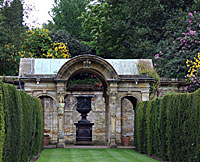 Now the gardens are stunning, even in the wet.
The big disappointment
comes to find out that after paying £8.80 as a senior to visit gardens and
castle interior, you are not allowed to
take photographs or videos inside the house. The very reason I went there, was
to record my visit. I do understand about flash photography fading precious artefacts, I would
have liked to have taken some pictures on the understanding no lights could be
used.
Now the gardens are stunning, even in the wet.
The big disappointment
comes to find out that after paying £8.80 as a senior to visit gardens and
castle interior, you are not allowed to
take photographs or videos inside the house. The very reason I went there, was
to record my visit. I do understand about flash photography fading precious artefacts, I would
have liked to have taken some pictures on the understanding no lights could be
used.
They have done their very best to give a big flavour of the periods of the house. Costumes, furniture and a serious attempt to give you the feel of its age. Models of Henry & the main characters surrounding him. Wall hangings from the 1500s and furniture that looks so uncomfortable to use.
Transport yourself back in time and this is a place of huge influence, privilege and not a little steeped in corruption, personal gain and dedication to to walking the line between the Kings favour & death via lies and the monarchs convenience. Henry had six wife's, Anne was the unfortunate one, the rest got away with it and only one died naturally whilst married to him. A good way to remember what happened to his wives is this easy rhyme: divorced, beheaded, died, divorced, divorced, survived.
Important people are everywhere. Power wealth & privilege abound. The people below main architect don't get a mention or thought. The nearest masons, gardeners, housekeepers, cooks & servants got to have a note made about them, is registered in black & white photographs taken during Astor's restoration.
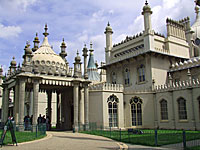 If it possible to get worse than this, Brighton Pavilion does try. At least
no one was executed!
If it possible to get worse than this, Brighton Pavilion does try. At least
no one was executed!
The Prince Regent, who later became King George IV, first visited Brighton in the year of 1783, due to his physician advising him that the sea water would be beneficial to his gout. In 1786 he rented a farmhouse in the Old Steine area of Brighton. Being remote from the Royal Court in London, the Pavilion was also a discreet location for the Prince to enjoy liaisons with his first wife, Mrs Fitzherbert, his marriage to whom was illegal, due to her Catholic religion. Between 1815 and 1822 the designer John Nash redesigned the palace, and it is the work of Nash which can be seen today. The palace looks rather striking in the middle of Brighton, having a very Indian appearance on the outside. However, the fanciful interior design, primarily by Frederick Crace and Robert Jones firm, is heavily influenced by both Chinese and Indian fashion (with Moghul and Islamic architectural elements). It is a prime example of the exoticism that was an alternative to more classicizing mainstream taste in the Regency style.
Looking at it today, it garish, tasteless, OTT beyond words & an example of a man out of control on hedonism.
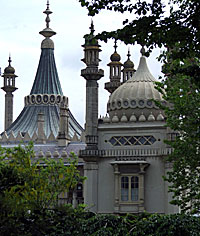 The Prince of Wales was plunged into debt by his
exorbitant lifestyle. His father refused to assist him, forcing him to quit
Carlton House and live at Mrs Fitzherbert's residence. In 1787, the Prince of
Wales's allies in the
House of Commons introduced a proposal
to relieve his debts with a parliamentary grant. The prince's personal
relationship with Mrs Fitzherbert was suspected, but revelation of the illegal
marriage would have scandalized the nation and doomed any parliamentary proposal
to aid him. Acting on the prince's authority, the
Whig leader Charles James Fox declared
that the story was a calumny. Mrs
Fitzherbert was not pleased with the public denial of the marriage in such
vehement terms and contemplated severing her ties to the prince. He appeased her
by asking another Whig,
Richard Brinsley Sheridan,
to restate
Fox's forceful declaration in more careful words. Parliament, meanwhile, was
sufficiently pleased to grant the Prince of Wales £161,000 for the payment of
his debts, in addition to £60,000 for improvements to Carlton House. Remember, in
the
United Kingdom,
it was not before 1869 that debtor's prison was abolished. This flagrant man was
pulled out of the mire by use of taxes raised from people who would end up in
prison if they owed money!
The Prince of Wales was plunged into debt by his
exorbitant lifestyle. His father refused to assist him, forcing him to quit
Carlton House and live at Mrs Fitzherbert's residence. In 1787, the Prince of
Wales's allies in the
House of Commons introduced a proposal
to relieve his debts with a parliamentary grant. The prince's personal
relationship with Mrs Fitzherbert was suspected, but revelation of the illegal
marriage would have scandalized the nation and doomed any parliamentary proposal
to aid him. Acting on the prince's authority, the
Whig leader Charles James Fox declared
that the story was a calumny. Mrs
Fitzherbert was not pleased with the public denial of the marriage in such
vehement terms and contemplated severing her ties to the prince. He appeased her
by asking another Whig,
Richard Brinsley Sheridan,
to restate
Fox's forceful declaration in more careful words. Parliament, meanwhile, was
sufficiently pleased to grant the Prince of Wales £161,000 for the payment of
his debts, in addition to £60,000 for improvements to Carlton House. Remember, in
the
United Kingdom,
it was not before 1869 that debtor's prison was abolished. This flagrant man was
pulled out of the mire by use of taxes raised from people who would end up in
prison if they owed money!
Once again you are sent round this outrageous monument to excess, extravagance, privilege, profligacy & toadying to Royalty with hardly a nod to the poor souls who worked as artisans to create it. Only the Royal, rich or famous get a credit in this mausoleum to self-indulgence.
Links for information on this page:
